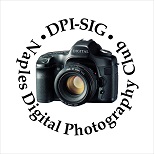Top ten Tips to better Fireworks Photography
1. Before you leave to see the fireworks-Think – what is my subject going to be? What kind of an image do I want to capture? Check that your camera settings are at good starting default point. You might want to increase the color saturation setting on the camera mode you will be using.
2. Scout the location and select your position early. Best time to set-up is before it gets to dark. Select a good location where you will have an unobstructed view of the fireworks. Try and select a dark location that will have a crosswind or be upwind so that you are not shooting through the fireworks smoke.
3. You might select a dark location that will include building, trees or other objects in the fireworks pictures, this will add additional interest and help identify the location.
4. You will need to use a tripod. Select a low ISO, such as 100 or 200, as this will generate less noise.
5. Use a cable release or the camera self-timer to eliminate as much camera shake as possible.
6. Almost any lens will work, wide-angle or telephoto, that gives the desired perspective. Try several different during the display.
7. Use the “bulb” or “B” shutter speed setting if your camera has this feature. Wait until you see a missile projecting up into the air (or feeling that a burst is about to go off). As the firework explodes, release the camera shutter and wait until all of the Fireworks twinkling have disappeared before releasing the shutter. If your camera does not have a bulb shutter speed you can use the manual mode and select the longest shutter speed the camera offers, and use a hat or piece of cardboard to cover and uncover the lens during the fireworks display.
8. Select an aperture setting between f/8 and f/22. Check your camera LCD display to see the results and adjust accordingly. If the firework highlights are burning out, in the center, increase the f-number and try again. Good results have been at the following settings: At ISO 100 at f/8 to f/16 and at ISO 200 at f/11 to f/22.
9. The autofocus system may have difficulty focus on distant bursts of color, if so set the camera’s focus mode to manual focus and the focus to infinity. An alternative method is to use the camera landscape scenic mode. The symbol for this setting is generally a mountain, but check your owner’s manual to be sure.
10. Be sure and bring a small flashlight for checking camera settings in the dark.
Exposure tips:
Aperture: Most photographers use ISO 100 and an aperture of between f/8 and f/16. The smaller aperture intensifies the colors of the fireworks and prevents overexposure. Experiment and see how the different aperture setting changes the look of your image.
Shutter speed: Use your camera’s “B” (bulb) setting. Start your exposure at the moment the burst begins, and end it when the burst reaches its peak. How long is long enough? For a single blast, a second or two should be sufficient.
Some photographers leave their camera on B and block the lens until there’s a burst, and repeating the process over several bursts. This results in a multiple exposure that can fill the frame with fireworks.
Using a tripod to get the steadiest pictures:
With shutter speed of ½ to 1/30 second it is best to use a cable release or the cameraself-timer drive mode.
With shutter speed of less than ½ second it is best to use a cable release or the cameraself-timer drive mode and the mirror lock-up feature.
Extend the tripod legs to get the desired height. Don’t extend the tripod center column as this is not nearly as stable.
In high wind hang your camera bag on the tripod to add additional stability.
Have fun and take lots of pictures.
Sonny Saunders
DPI-SIG co-founder
Adult Ed Photography Instructor
